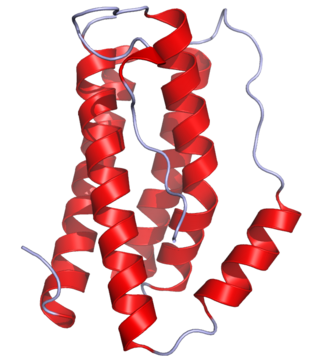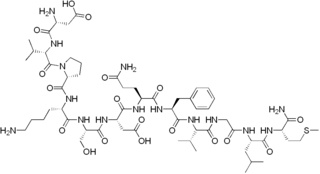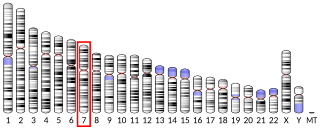| tachykinin, precursor 1 | |||||||
|---|---|---|---|---|---|---|---|
 Spacefilling model of substance P | |||||||
| Identifiers | |||||||
| Symbol | TAC1 | ||||||
| Alt. symbols | TAC2, NKNA | ||||||
| NCBI gene | 6863 | ||||||
| HGNC | 11517 | ||||||
| OMIM | 162320 | ||||||
| RefSeq | NM_003182 | ||||||
| UniProt | P20366 | ||||||
| Other data | |||||||
| Locus | Chr. 7 q21-q22 | ||||||
| |||||||
 | |
| Identifiers | |
|---|---|
| ChEBI | |
| ChEMBL | |
| ChemSpider | |
| ECHA InfoCard | 100.046.845 |
| MeSH | Substance+P |
PubChem CID | |
| UNII | |
| |
| Properties | |
| C63H98N18O13S | |
| Molar mass | 1347.63 g/mol |
Except where otherwise noted, data are given for materials in their standard state (at 25 °C [77 °F], 100 kPa). | |
Substance P (SP) is an undecapeptide (a peptide composed of a chain of 11 amino acid residues) [1] and a type of neuropeptide, belonging to the tachykinin family of neuropeptides. It acts as a neurotransmitter and a neuromodulator. [2] [3] Substance P and the closely related neurokinin A (NKA) are produced from a polyprotein precursor after alternative splicing of the preprotachykinin A gene. The deduced amino acid sequence of substance P is as follows: [4]
Contents
- Discovery
- Receptor
- Function
- Overview
- Vasodilation
- Inflammation
- Pain
- Mood, anxiety, learning
- Vomiting
- Cell growth, proliferation, angiogenesis, and migration
- Clinical significance
- Quantification in disease
- Blockade for diseases with a chronic immunological component
- Chemotherapy induced nausea and vomiting
- Radiotherapy
- Other findings
- References
- External links
with an amide group at the C-terminus. [5] Substance P is released from the terminals of specific sensory nerves. It is found in the brain and spinal cord and is associated with inflammatory processes and pain.















